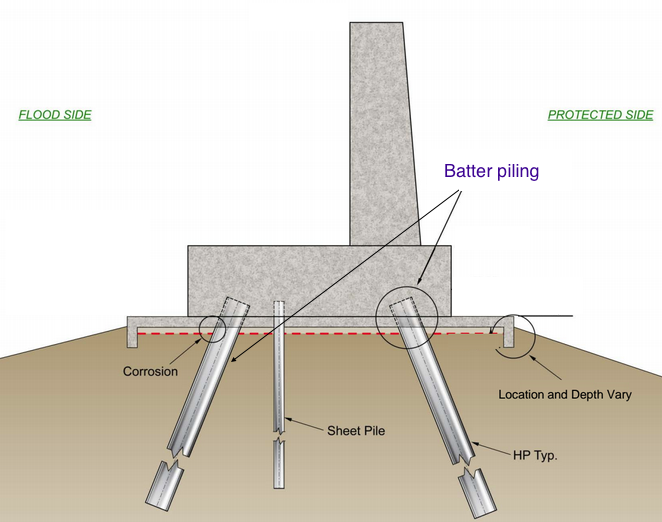The announcement Monday that the U.S. Army Corps of Engineers is installing a monitoring system to watch for problems with the Mississippi River-Gulf Outlet floodwalls likely was sour news for most east bank residents.
But for the Southeast Louisiana Flood Protection Authority-East, it was vindication for the reforms that birthed it after Hurricane Katrina. By law, the authority’s board includes engineers and scientists. It replaced levee boards that had become politicians’ patronage plums that were filled with people who may have had no technical expertise.
In pushing for the new authority, reformers said professional prowess was needed to adequately oversee the engineering and construction done by the corps.
Today’s action marks one of the first times the flood authority’s major technical concerns have been heeded by the corps. It has voiced concerns about the MR-GO levee design since 2007
“We raised the concern the moment the proposal was put forward to build it that way,” said Stephen Estopinal, the engineer who is president of the board.
“I think this is a pretty good example of why it was important to establish this independent authority, and putting qualified people on the authority so they can review these things.”
The concern centered on the “batter piles” – piling driven on an angle so they provide subsurface lateral support on both sides of of the wall’s foundation.
A variation of the “T” wall design considered a vast improvement on the “I” walls that failed during Katrina, the authority was troubled by the fact the design had never been used on the soft, subsidence-plagued delta soils the entire region sits on.

That could result in two problems that might reduce the strength of the walls, said Bob Turner, the engineer who is the regional director of the authority. The first was corrosion that might set in portions of pilings if subsidence left them open to the salty water in the MR-GO which is fed by the Gulf.
The authority urged the corps to reduce that risk by coating the pilings with a impervious, corrosion-resistant coating.
But the corps chose to account for possible corrosion by increasing the thickness of the metal in the pilings, a decision the authority considered less safe.
“We raised hell about this with the corps from the very first,” said John Barry, former vice-president of the board. “We voted unanimously to have the corps coast those pilings. But, in their wisdom, they decided not to.”
The second threat was what engineers term “subsidence-induced bending moment” — increased stress on the angled pilings caused as the subsiding soil presses against it.
Monday, the corps released a study of inspections showing both subsidence and corrosion along the wall was less than built into its performance parameters. Col. Richard Hansen, flanked by his top engineering staff as well as the flood authority’s Turner, said the corps analysis showed the walls currently could perform as designed, standing up to the so-called 100-year storm.
But Hansen said the corps was “not going to gamble with the safety of the public,” so it was building a comprehensive system of monitors that will provide real-time information on corrosion, subsidence and stress on the batter piles.
Of most concern is the section that runs from the Bayou Dupre to Bayou Bienvenue and connects with the Lake Borgne Surge Barrier. It cost about $350 million to build, and has a life of 100 years. However, Troy Constance, Deputy District Engineer, said that was not a guarantee it would not need repairs before that time.
In fact, said Estopinal, if corrosion or subsidence renders sections unreliable, the costs for repair likely would fall “on the taxpayers of East Jefferson, Orleans and St. Bernard parishes, and the state of Louisiana.”
Sandy Rosenthal, founder of Levees.org, said that was a serious problem with the new flood authority.
“They are great, they do a great job, and it’s better than the old system,” she said. “But the bottom line is they have no authority to tell the corps to do anything.
“They wanted these piling coated since the beginning. But the corps said ‘no.’
“And here we are.”


